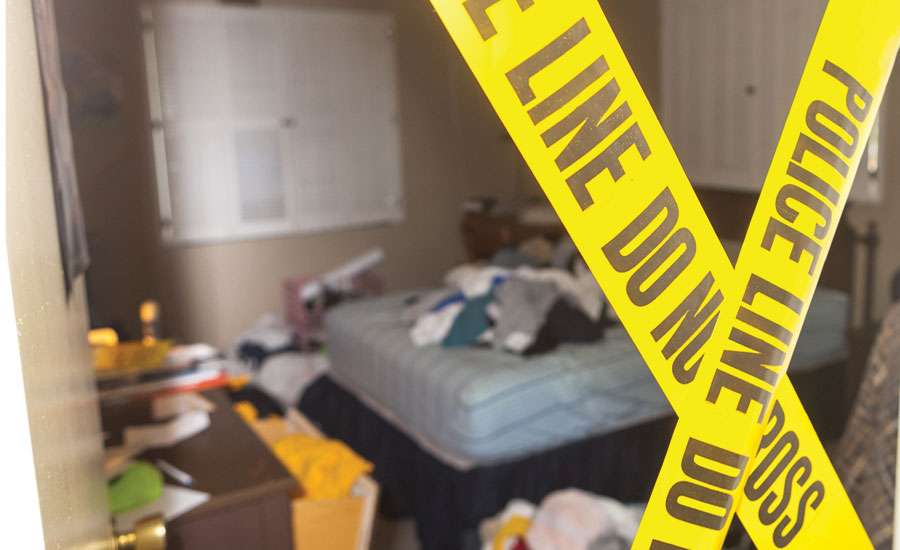Who Pays for Crime Scene Cleanup

When a violent crime, suicide, or unattended death happens on your property, the emotional toll is overwhelming. The last thing anyone wants to think about is who’s going to clean up and who’s going to pay for it. But these are real questions that need answers, and they need them quickly.
The short answer is that the property owner is typically responsible for crime scene cleanup costs. However, most homeowners insurance policies cover biohazard remediation, which can ease the financial burden during an already difficult time.
Understanding Your Financial Responsibility
In most situations, the property owner bears the initial responsibility for crime scene cleanup. If a homicide, suicide, or accidental death occurs in your home, you as the homeowner need to arrange and pay for professional biohazard cleanup services.
Landlords face similar obligations when traumatic events occur in rental properties. Business owners must handle cleanup costs when incidents happen at their commercial locations. The responsibility falls to whoever owns or controls the property where the incident took place.
It’s worth noting that contrary to what many people assume, law enforcement and public health departments do not clean up after crime scenes. Police secure the scene, collect evidence, and release it back to the property owner, but they don’t handle the actual cleanup.
What Homeowners Insurance Typically Covers
Most standard homeowners insurance policies provide coverage for crime scene cleanup under their dwelling coverage or additional living expenses provisions. This coverage extends to a range of traumatic incidents including homicides, suicides, unattended deaths, accidental deaths, and violent crimes.
The typical homeowners policy covers crime scene cleanup on an all-risk basis, meaning there aren’t specific exclusions for blood, bodily fluids, or human remains. Coverage usually includes the removal and proper disposal of biohazardous materials, decontamination of affected areas, and restoration of the property to a safe condition.
Many policies also cover additional living expenses if you need to temporarily relocate while cleanup and restoration take place. This can include hotel stays and meals while your home is uninhabitable.
Coverage Limits and What They Mean
Insurance coverage for biohazard cleanup isn’t unlimited. Most policies cap coverage at a percentage of your total dwelling coverage amount, typically between 10 and 30 percent. For example, if your home is insured for $300,000, you might have between $30,000 and $90,000 available for cleanup and temporary living expenses combined.
The actual cost of crime scene cleanup varies significantly based on the severity of the incident. Professional biohazard remediation services typically range from $1,500 for minor incidents to $25,000 or more for extensive contamination. Most residential crime scene cleanup jobs fall in the $1,500 to $5,000 range.
Your policy deductible also factors into what you’ll pay out of pocket. Most homeowners face deductibles between $1,000 and $5,000 before insurance coverage kicks in. This means even with insurance, you’ll likely have some initial costs to cover.
What About Personal Property and Contents
Here’s where coverage can get tricky. While most homeowners policies cover structural cleanup like removing contaminated drywall, flooring, and carpeting, coverage for furniture and personal belongings varies widely.
Some policies exclude furniture and contents cleanup entirely, while others provide limited coverage. Personal property coverage typically runs at 50 to 70 percent of your dwelling coverage amount, but not all policies extend this to biohazard-contaminated items.
This is why it’s critical to review your specific policy details with your insurance agent. A reputable biohazard cleanup company can work within the parameters of your coverage and help maximize what your policy will pay.
Filing an Insurance Claim for Cleanup
Time is crucial when filing an insurance claim for crime scene cleanup. Contact your insurance company as soon as law enforcement releases the scene. Most insurers require prompt notification to process claims efficiently.
You’ll typically need to provide several documents to support your claim. These include the incident report from police or emergency responders, a detailed description of the scene and damage, photographs or documentation of contamination, and an invoice or estimate from a certified cleanup provider.
Working with a professional trauma cleanup company that has experience handling insurance claims makes this process much smoother. Many cleanup companies will help you navigate the paperwork, submit required documentation, and even speak directly with insurance adjusters on your behalf. Some insurers work exclusively with approved cleanup providers to ensure the work meets their standards.
When Insurance Falls Short
Even with insurance coverage, gaps can leave you responsible for additional costs. High deductibles, coverage limits that don’t fully cover extensive cleanup, and specific policy exclusions can all create financial shortfalls.
In these situations, state victims’ compensation programs often fill the gaps. These government-funded programs provide financial assistance for crime victims and their families, typically offering between $1,000 and $10,000 for cleanup costs, though amounts vary by state. Victims’ compensation programs can provide coverage even when insurance denies claims or when the victim doesn’t have insurance.
Eligibility and assistance amounts depend on your location and the specific circumstances of the crime. These programs generally require that you report the crime to law enforcement and cooperate with the investigation.
Can You Recover Costs from the Perpetrator
In some cases, the person who committed the crime may be held financially responsible for cleanup costs. Courts can order restitution as part of a criminal sentence, requiring the perpetrator to reimburse victims for expenses including professional cleanup.
However, collecting these funds presents real challenges. Even when courts order restitution, the perpetrator may lack the financial means to pay, may be incarcerated, or may simply refuse to pay. This makes restitution an unreliable primary source of funding for cleanup costs.
Renter’s Insurance and Cleanup Coverage
Renters aren’t off the hook for cleanup responsibilities. If a traumatic event occurs in a rental unit, the tenant often bears responsibility for cleanup costs.
Renters insurance policies frequently include similar protections as homeowners insurance, though coverage amounts tend to be lower. These policies may cover personal property contaminated during the incident, temporary housing while the unit undergoes professional cleaning, and additional living expenses during the cleanup period.
The lease agreement may outline specific responsibilities, though it’s generally uncommon for landlords to cover cleanup costs. As with homeowners insurance, reviewing your specific policy and contacting your insurance company immediately after an incident is crucial.
The Importance of Professional Cleanup
Attempting to clean a crime scene yourself isn’t just emotionally devastating, it’s also dangerous and potentially illegal [web:]. Blood, bodily fluids, and tissue pose serious health risks including exposure to bloodborne pathogens like HIV, hepatitis B and C, and other infectious diseases.
Professional biohazard cleanup specialists have the training, certification, equipment, and protective gear necessary to safely remove all traces of biological hazards [web:]. They follow strict safety protocols and properly dispose of contaminated materials according to state and federal regulations.
Beyond the health and safety considerations, using certified professionals ensures that cleanup meets insurance requirements. Insurers typically require that cleanup be performed by licensed, insured professionals to approve claims.
Planning Ahead and Understanding Your Policy
Nobody wants to think about violent crime or death occurring in their home, but understanding your insurance coverage before you need it can save tremendous stress during a crisis.
Take time now to review your homeowners or renters insurance policy. Look specifically for coverage related to biohazard cleanup, trauma scene cleanup, additional living expenses, and personal property protection. Note your coverage limits and deductibles.
If your policy doesn’t include adequate coverage, consider discussing options with your insurance agent. Some insurers offer additional riders or increased coverage limits that can provide better protection.
Keep your insurance agent’s contact information readily accessible. In the event of a traumatic incident, you’ll want to file your claim as quickly as possible.
Getting Help When You Need It Most
Dealing with the aftermath of a violent crime, suicide, or unattended death is overwhelming. You’re facing grief, trauma, and difficult decisions at the worst possible time.
Professional biohazard cleanup companies understand what you’re going through. Beyond their technical expertise, they provide compassionate support and handle the logistics of working with your insurance company. This allows you to focus on what matters most—taking care of yourself and your family.
If you’re facing this situation, reach out to a certified trauma cleanup specialist immediately. They can provide a free assessment, help you understand your options, and begin the process of restoring your property to a safe, clean condition. Most work directly with insurance companies and can often arrange payment so you don’t have to pay upfront and wait for reimbursement.
Understanding who pays for crime scene cleanup and how insurance coverage works removes at least one source of stress during an impossibly difficult time. While the property owner typically bears initial responsibility, homeowners and renters insurance policies usually provide substantial coverage that can cover most or all of the costs.
Services
Service Areas
